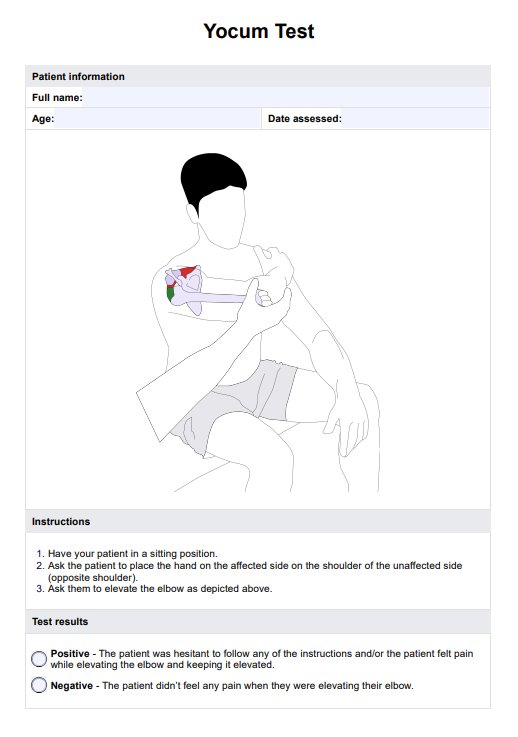Our Yocum Test template is designed specifically for physical therapists and orthopedic specialists, so they are most likely to use and benefit from our template.

Yocum Test
If you suspect that your patient has subacromial impingement syndrome, conduct the Yocum Test to check if they have signs of having it.
Use Template
Yocum Test Template
Commonly asked questions
They can use it while conducting the test to have a tangible document or record of the patient’s results.
It’s used mainly as a document to note the test results. However, it can also be used as a guide or reference on how to conduct the Yocum test.
EHR and practice management software
Get started for free
*No credit card required
Free
$0/usd
Unlimited clients
Telehealth
1GB of storage
Client portal text
Automated billing and online payments











